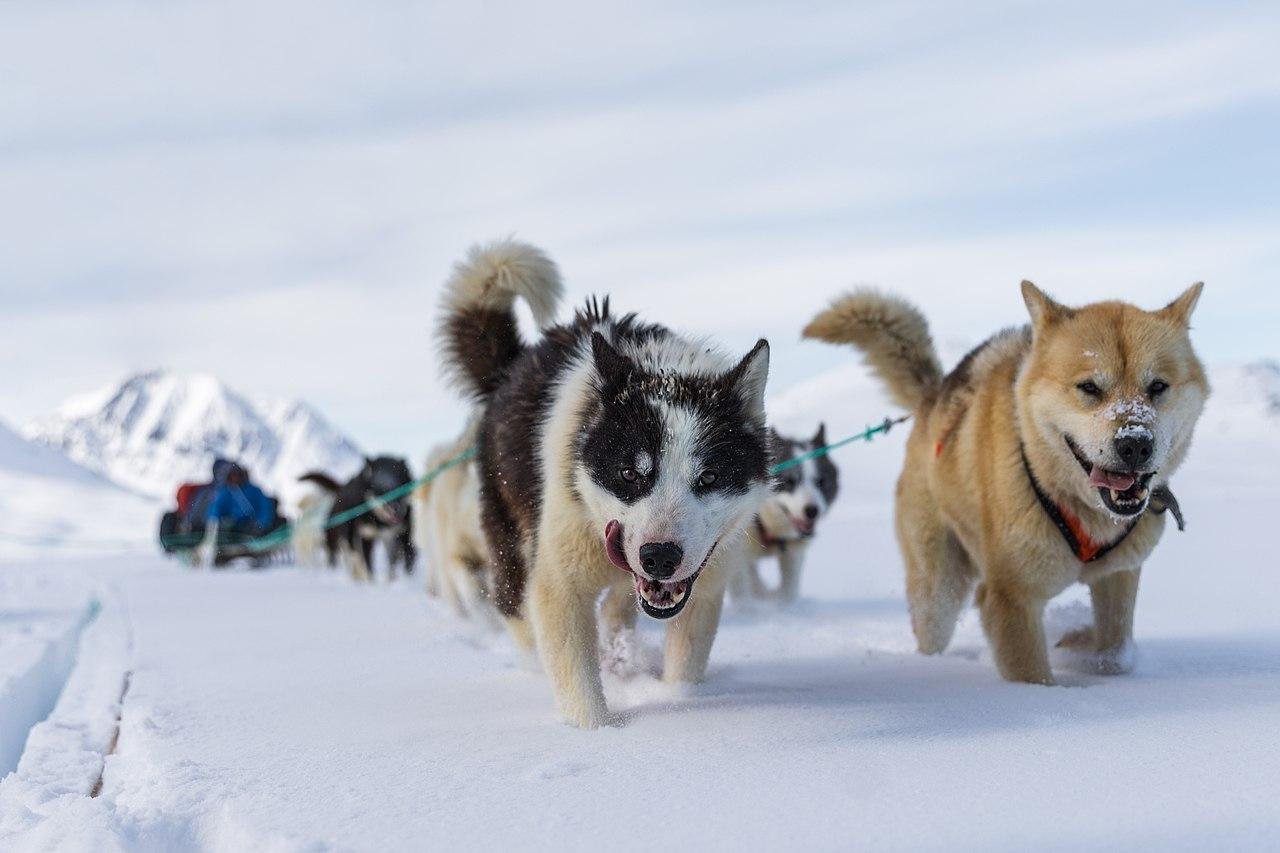Greenland’s sled dogs, the Qimmit, have been more than loyal companions for many centuries. They’ve been indispensable partners, pulling sleds across the island’s icy terrain and helping Inuit communities survive one of the world’s most inhospitable environments. Now, recent genetic research into these animals is not only unravelling their unique history but also revising portions of Greenland’s history.
 Genetic research on Greenland’s sled dogs sheds light on Inuit history and migration patterns. Credit: Markus Trienke / CC BY-SA 2.0
Genetic research on Greenland’s sled dogs sheds light on Inuit history and migration patterns. Credit: Markus Trienke / CC BY-SA 2.0
In a study published in Science, researchers sequenced the genomes of more than 90 sled dogs, some modern and others preserved in bones, skin, and even museum fur dating back as far as 800 years. Comparing their genomes with nearly 1,900 other sequenced dogs, the scientists determined that Greenland’s Qimmit are genetically distinct from European dogs and wild wolves—despite historical attempts to crossbreed them.
According to the researchers, Greenlandic sled dogs remained genetically isolated. The study shows that these dogs have preserved a unique lineage, living relatively unchanged for centuries despite contact with outsiders.
The study also reveals that sled dog DNA provides a window into the human past. Because Inuit communities and their dogs migrated together and remained in close proximity, the genetic past of the Qimmit mirrors the past of their human companions. Scientists traced genetic splits in four distinct populations of sled dogs across Greenland and found evidence suggesting that Inuit communities arrived on the island several hundred years earlier than previously believed—possibly even before the Vikings.
 Qimmit pulling Inuit travelers in Greenland during the 1890s. Originally published in Robert Peary’s Northward Over the Great Ice (1898). Public domain via Wikimedia Commons.
Qimmit pulling Inuit travelers in Greenland during the 1890s. Originally published in Robert Peary’s Northward Over the Great Ice (1898). Public domain via Wikimedia Commons.
Aside from migration, the DNA also reflects times of hardship. Researchers discovered genetic signatures of population depletion in sled dogs that likely indicate periods of starvation or disease that afflicted humans and their animals. Qimmit, therefore, serve as an indirect record of Inuit life over centuries.
As much as the study depicts the close historical connection between Inuit people and dogs, it also records modern challenges. Climate change is reducing sea ice, and as a result, there are fewer places and seasons in which sled dogs can be utilized. At the same time that sea ice has been decreasing, snowmobiles have become widespread, reducing the need for dog teams. Consequently, the number of sled dogs in Greenland is gradually dropping.
Still, scientists emphasize the importance of saving this ancient breed, one that is not only a living link to the Inuit past but also an adaptation finely tuned for endurance in the Arctic.
More information: T. R. Feuerborn et al. (2025). Origins and diversity of Greenland’s Qimmit revealed with genomes of ancient and modern sled dogs.Science389,163-168. doi:10.1126/science.adu1990





